



In the poultry sector, there is a global trend towards choosing group nests over individual nests. Wannes Dermaut explains how farmers want to optimize house space and make smart investments.
I’ll begin this article by stating the obvious: automation reduces the amount of manpower needed. It’s the same in every sector, including poultry farming. Particularly when it comes to broiler breeders, you should never underestimate the extra profit that can be made through automation. The statistics are quite impressive:
- For non-automated feeding and manual layer nests, you need, on average, one full-time employee per 3,000 hens.
- Switching to mechanical feeding doubles the capacity to 6,000 hens per worker.
- Investing in nest automation increases this number to 12,000 hens per person.
- With an automated egg packager, you can even achieve a capacity of 18,000 animals per employee.
In addition, automation can allow you to increase the number of animals per house to maximize the profitability. However, there are limits to this. Breeder companies specify the minimum feeding area per hen. Therefore, the number of broiler breeders you can keep depends on the layout of your house. Your choice of nest type — group or individual — also plays a very important role in determining how many hens your house can accommodate.
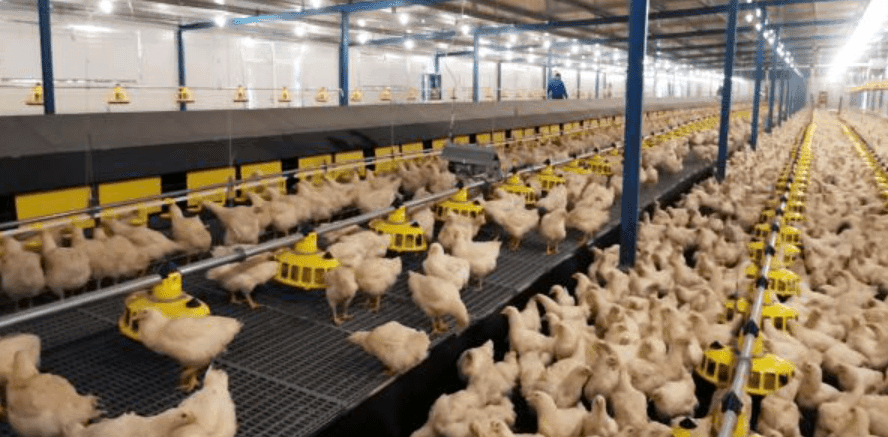
1. Increase the stocking density with group nests
The stocking density for hens differs depending on whether you have a house with a group/community nest (EU style) or a house with individual nests (US style). With a group nest — one nest row in the center of the house — you can easily install three feed circuits, even if the house is only 12 meters (40 ft) wide. This means that you can have one feed circuit in the scratch area on each side of the nest and an extra third circuit around the nest on the slats (image). This expands the feed capacity and means you can keep a larger number of animals in the house. With individual nests, you usually have two nest rows in the house, one on the left and one on the right. The two feed circuits are both placed next to or around the nest (image). With individual nests, you usually do not have space for a third feed circuit. Therefore, group nests utilize the available space in your house much more efficiently.
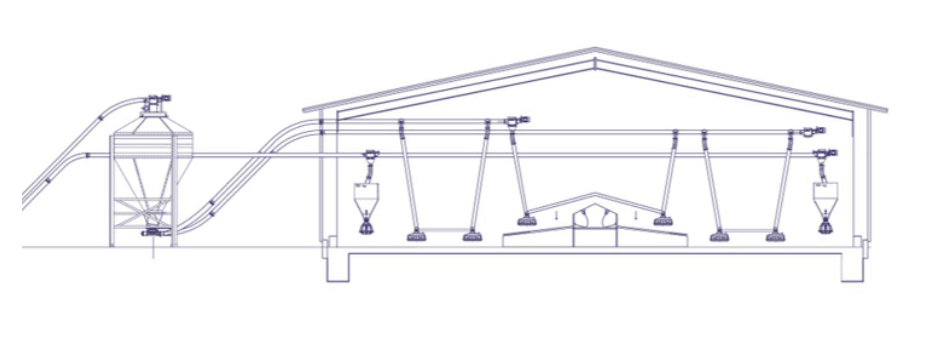
EU-style with group/community nest: one feed circuit in the scratch area on each side of the nest and an extra third circuit around the nest on the slats.
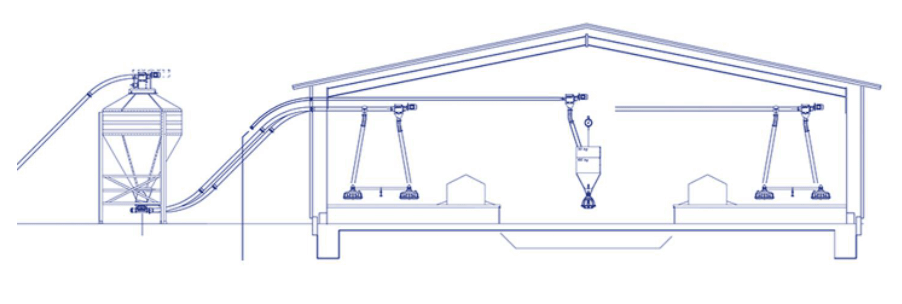
US-style with individual nest: two nest rows in the house, one on the left and one on the right. The two feed circuits are both placed next to or around the nest.
A house with a group nest also has the advantage that the stocking density of the hens can be higher than with individual nests (table). That is why investing in an automatic group nest is one of the fastest ways to increase your profits and reduce your labor costs. Labor costs can vary widely per region but ultimately every company that wants to make a profit can benefit from cost reduction.
Table: the impact of nests on the stocking density
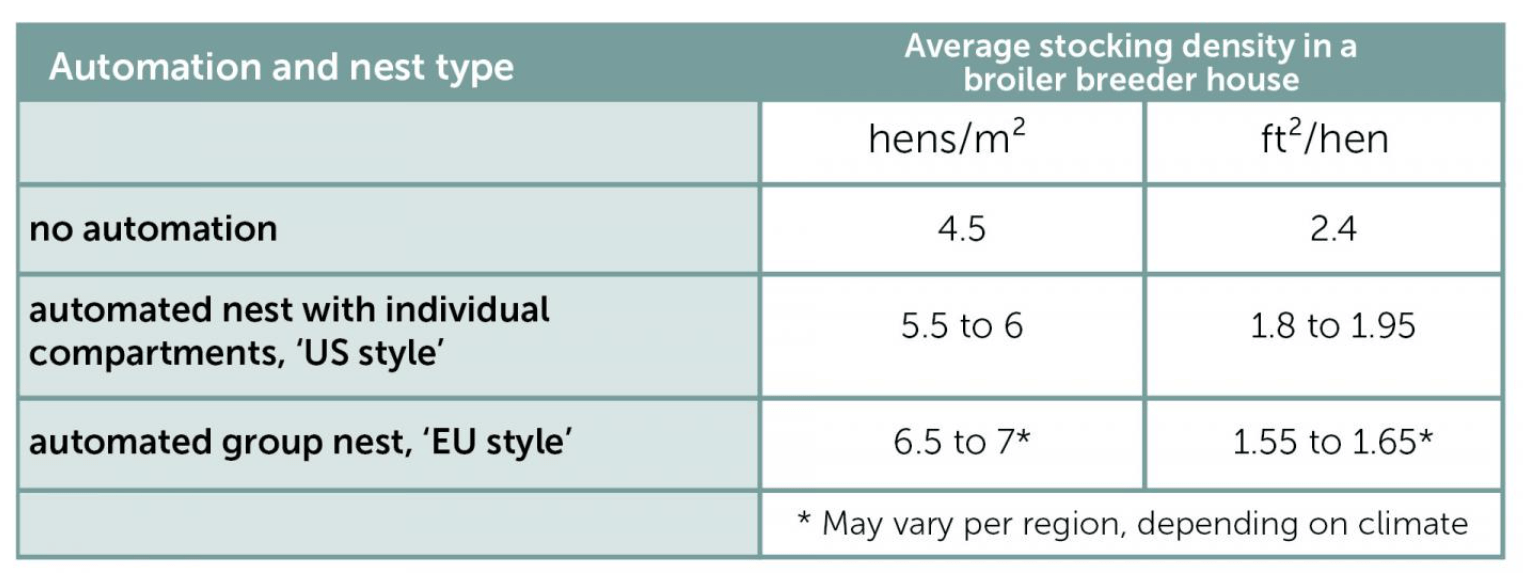
Worldwide: the use of group nests
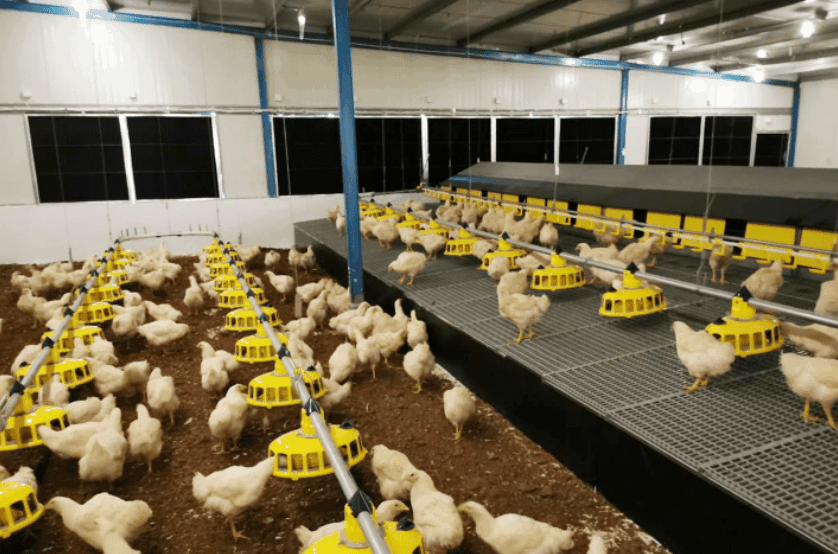
The ‘group or community nest’ concept originated in Europe. Here, group nests are the norm for all broiler breeder projects. Broiler breeder farmers emigrating from the Netherlands introduced this concept in Canada. When they launched a new poultry business in the country, they brought the group nest idea with them. Today, two thirds of the Canadian poultry market uses group nests and this proportion is only increasing.
In the Pacific Region, four out of five houses with broiler breeders are fitted with group nests.
In Asia, there is more variation. In countries with low labor costs, manual nest systems are still used but figures show a trend towards automated systems. The decision to use group nests is often influenced by traditions, habits and the local climate. As more business owners in this region opt for closed houses with climate control, the percentage of group nests will increase.
In South America, half of farmers have said ‘yes’ to group nests and in Brazil, this group makes up
75 %.
In the US: making broiler breeder companies more profitable
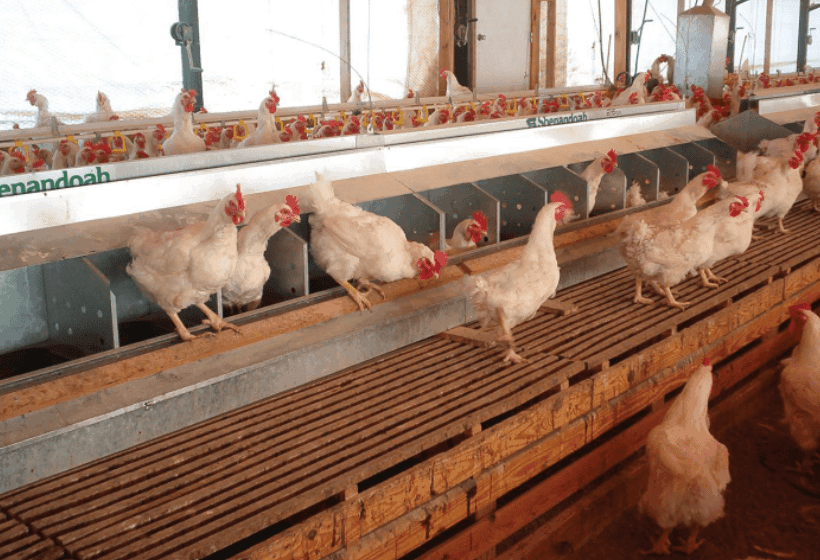
In the United States, everyone opts for automated nest systems with individual compartments. There is space for just one hen per nest opening. This system has proven popular due to the high (for the US) stocking densities. However, users of individual nests are unable to increase their stocking densities beyond a certain point due to three reasons:
- limited feeding places as there are ‘only’ two feed circuits (as explained above).
- long rows of individual nest boxes create a barrier for the hens resulting in less circulation. This often leads to an uneven distribution in the house.
- even with two nest rows, the available nest space is limited.
Want to increase the stocking density? Choose a different type of nest that can handle a higher capacity and allows you to increase the feed capacity. Group nests can handle this higher stocking density and therefore greatly impact your return on investment. This explains why there is a global trend towards choosing group nests over individual nests.
A few facts about group nests:
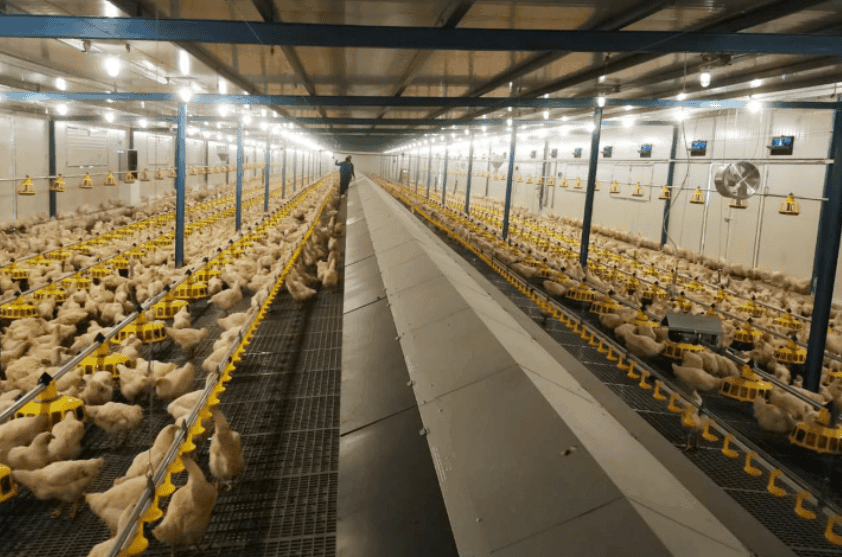
- The term ‘group or community nest’ is synonymous with ‘EU style’. EU style is a house layout that originated in Europe.
- The nest is located at the center and there are slats on either side of the nest.
- The average stocking density in the house is high: 6 to 7 hens per m² (1.8 to 1.54 ft² per hen).
- The higher investment costs are quickly recuperated: the higher stocking density reduces the cost per fertilized egg and increases the return per m².
- Demand is growing worldwide for group nests.
2. Increase returns with longer production house
In the past, technical limitations restricted the length of the house:
- the maximum length of feeding and drinking lines
- the ventilation capacity
- the stretch capacity of egg belts
However, in some regions, there is a trend towards making houses longer for broiler breeders in the production phase.
The approach in the new, longer houses
When drafting plans for new houses, poultry farmers usually decide on the construction and house layout in the initial phase. Quite early on in the design process, they take two important steps at once. These days there are more technical possibilities, which means a longer house does not face constraints due to the limitations of house equipment. The design of group nests has evolved, so long lengths are no longer a challenge.
Now and in the future, the length of a house will be determined on the basis of other factors such as the construction costs per square meter and the resulting profitability.
Expanding the width of houses is another possibility. In Europe, poultry farmers often double the width of a house to accommodate two rows of group nests. This adjustment also optimizes the construction costs per square meter and the stocking density. This trend is gradually being adopted in other countries.
3. Evolution of the group nest
In regions where the group nest is already the standard, there are new ideas for improving profitability.
A. Optimizing the design of group nests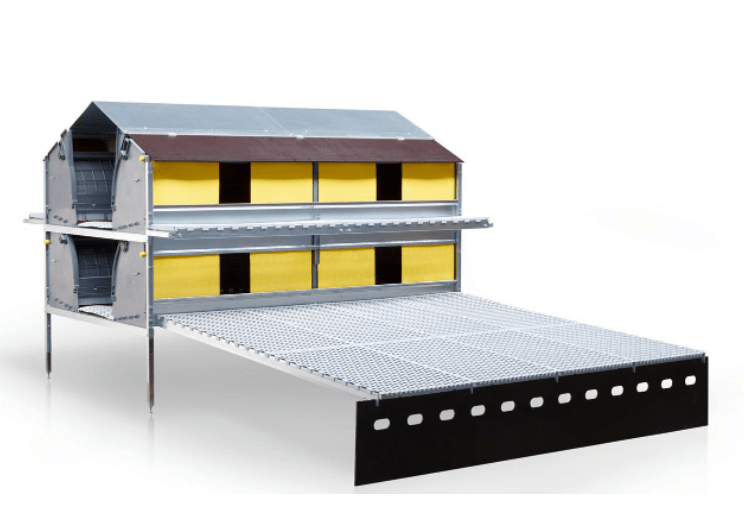
More chickens is good for profit — that goes without saying. However, more hens means you need more nest space. The nest depth of group nests on the market vary widely but the nest length options are limited. With a greater nest depth, you can house more chickens and still satisfy all the regulations. Nest depth is therefore an important factor for optimizing your profits. The bigger the nest, the higher the stocking density in your house.
B. Optimizing the space in the house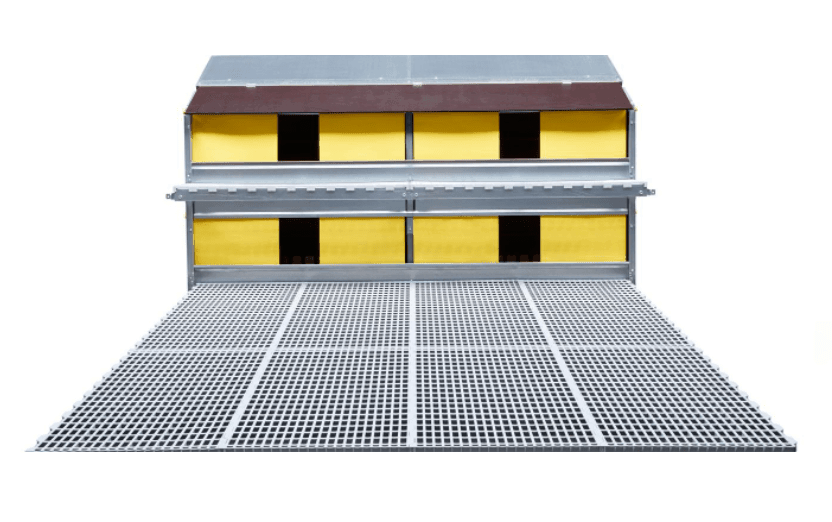
Another way to increase your profits is to lower the distance between the nest and the manure pit. This means the step that hens have to make is significantly lower. Studies show that lowering the slat height — from 60 cm (24”) to 25 cm (10”) — reduces deaths due to leg injuries by half. Easier access also reduces the number of floor eggs. The hens don’t need to jump as often and that means they can more easily reach the nest to lay the egg.
C. Optimizing the materials for the egg belt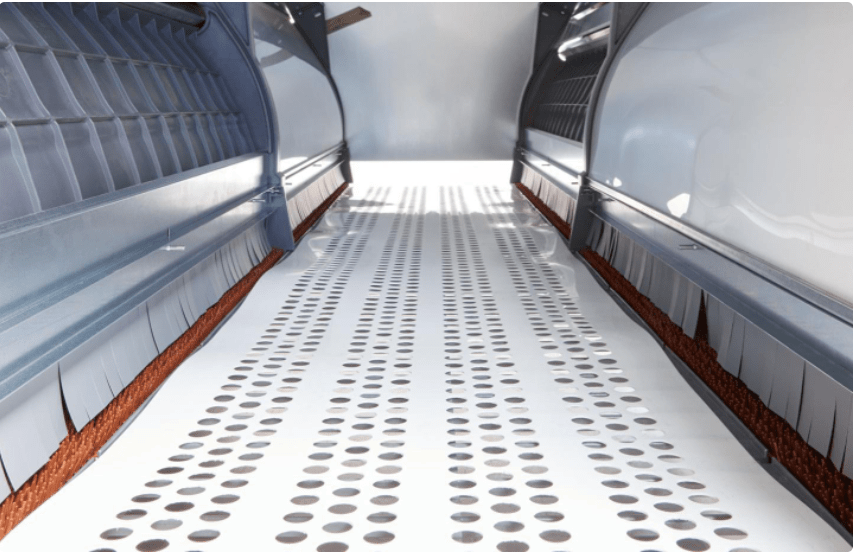
The trend of making the switch to plastic egg belts is already well underway. The advantages of this versus woven egg belts are clear. A poultry farmer that uses plastic egg belts will never go back to woven egg belts. The main reasons for this are hygiene and ease of cleaning. Due to the perforations in the egg belt, dirt, broken eggs and feathers drop through and what you’re left with are clean eggs. If you want to know more about the importance of clean eggs, please consult the manuals of the three large breeding companies: Hubbard, Cobb and Aviagen.
The best option for broiler breeders
If you want to professionalize and grow as a poultry farmer, investing in automatic nests is an absolute must. The importance of profitability is leading the global poultry sector to increasingly opt for group nests with an EU style layout. Developers of house equipment are investing in innovations to improve the profitability of group nests. My tip for every poultry farmer planning to construct a new house? Make your decision before the start of the construction project because an integrated approach can only result in a better return on investment.









